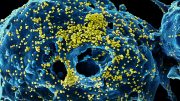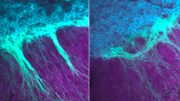
Computer scientists have created D-REC, an edge caching optimization method that uses a “digital twin” to forecast and improve data storage in wireless networks, thereby boosting speed and reliability.
A new edge caching method using a “digital twin” significantly improves wireless network efficiency by predicting user data needs and optimizing data storage, thereby enhancing network reliability and speed. Researchers are seeking to test this method in real-world applications.
Computer science researchers have pioneered a new technique for predicting the data needs of wireless computing users before they arise, enhancing the speed and reliability of wireless networks. This innovative method employs a “digital twin” technology, which replicates the network it supports, allowing for proactive data management.
At issue is something called edge caching. Caching refers to storing data on a server that a system or network thinks users will be using (or re-using) in the near future. This allows the system to meet user demands more quickly than if the system had to retrieve the data from the original source. Edge caching is when a system caches data in the server that is closest to the end user, such as computers that are incorporated into network routers or colocated with those routers.
“Two big challenges here are determining which data need to be cached and how much data the edge server should store at any given point in time,” says Yuchen Liu, corresponding author of a paper on the work and an assistant professor of computer science at North Carolina State University. “Systems can’t put everything in edge caches, and storing too much redundant data on an edge server can slow down the server if the data are using too many computational resources. As a result, systems are constantly making decisions about which data packages to store and which data packages can be evicted.
“The more accurate a system is at predicting which data users will actually want, and how much data the edge servers should be storing, the better the system’s performance,” Liu says. “Our work here focused on improving those predictions.”
D-REC: A New Edge Caching Optimization Method
The new edge caching optimization method, called D-REC, makes use of a computational modeling technique called a digital twin. A digital twin is a virtual model of a real object. In the case of D-REC, the digital twin is a virtual model of a defined wireless network – whether that’s a cellular network or a Wi-Fi network.
“The method can be applied to any wireless network, depending on the system administrator or network operator’s needs,” says Liu. “D-REC can be adjusted depending on the needs of the user.”
In D-REC, the digital twin takes real-time data from the wireless network and uses it to conduct simulations to predict which data are most likely to be requested by users. These predictions are then sent back to the network to inform the network’s edge caching decisions. Because the simulations are performed by a computer that is outside of the network, this does not slow down network performance.
Efficiency and Predictive Capabilities of D-REC
The researchers used open-source datasets to determine whether a wireless network operated more efficiently with D-REC. The researchers ran extensive experiments designed to account for many variables, such as the scale of the network, the number of users on a network, and so on.
“D-REC outperformed conventional approaches,” says Liu. “Our technique improved the network’s ability to accurately predict which data should be edge cached. D-REC also helped systems do a better job of balancing data storage across their networks.”
In addition, because D-REC’s digital twin focuses on predicting network behavior, it can identify potential problems in advance.
“For example, if the digital twin thinks there is a high likelihood that a specific base station, or server, will be overloaded, the network can be notified – allowing it to redistribute data across the network in order to preserve network performance and reliability,” says Liu.
“At this point, we’re open to working with network operators to explore how D-REC can improve network performance and reliability in real-world situations.”
Reference: “Digital Twin-Assisted Data-Driven Optimization for Reliable Edge Caching in Wireless Networks” by Zifan Zhang, Yuchen Liu, Zhiyuan Peng, Mingzhe Chen, Dongkuan Xu and Shuguang Cui, 22 July 2024, IEEE Journal on Selected Areas in Communications.
DOI: 10.1109/JSAC.2024.3431575
This work was done with support from the National Science Foundation under grants 2312138, 2312139, and 2332834.









Be the first to comment on "New Method Improves Wireless Network Speed and Reliability"